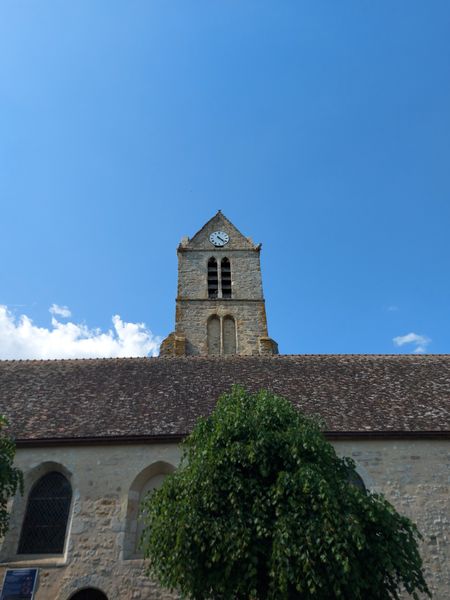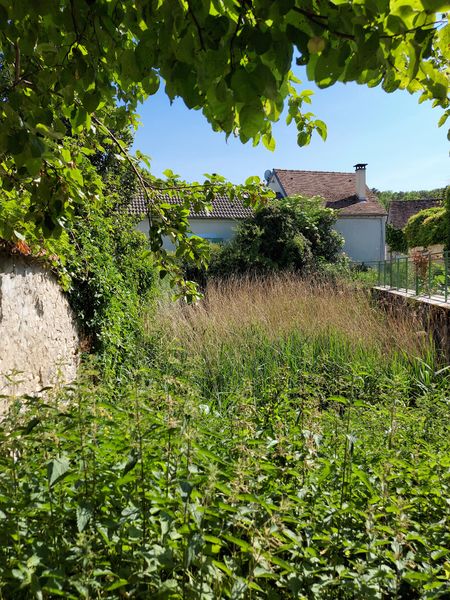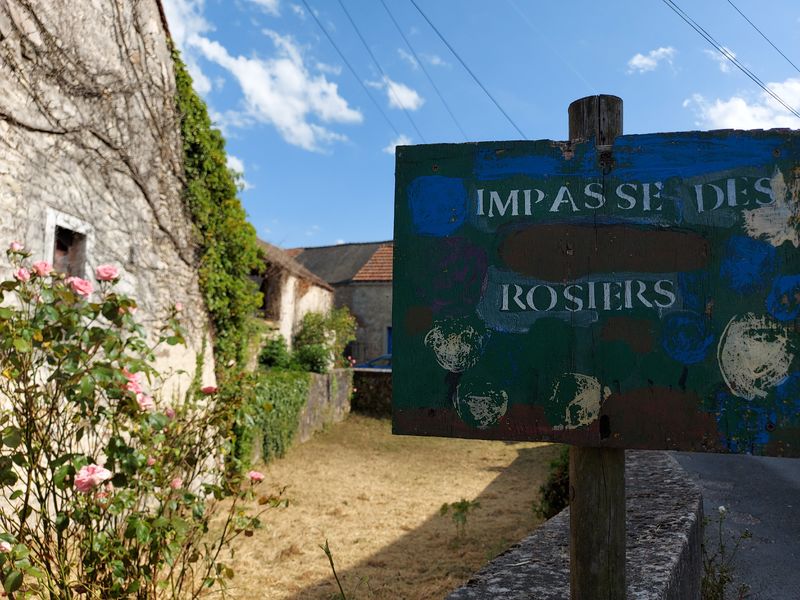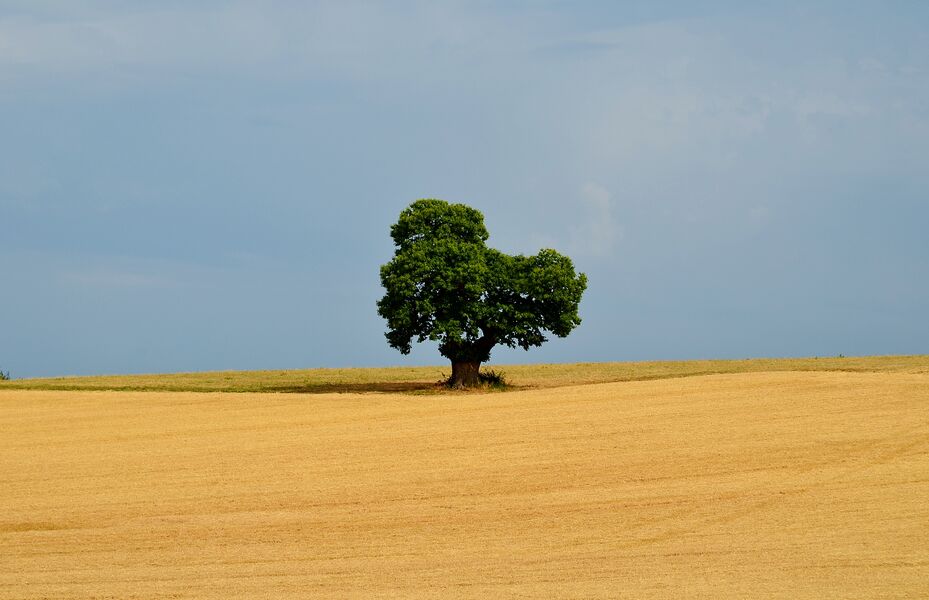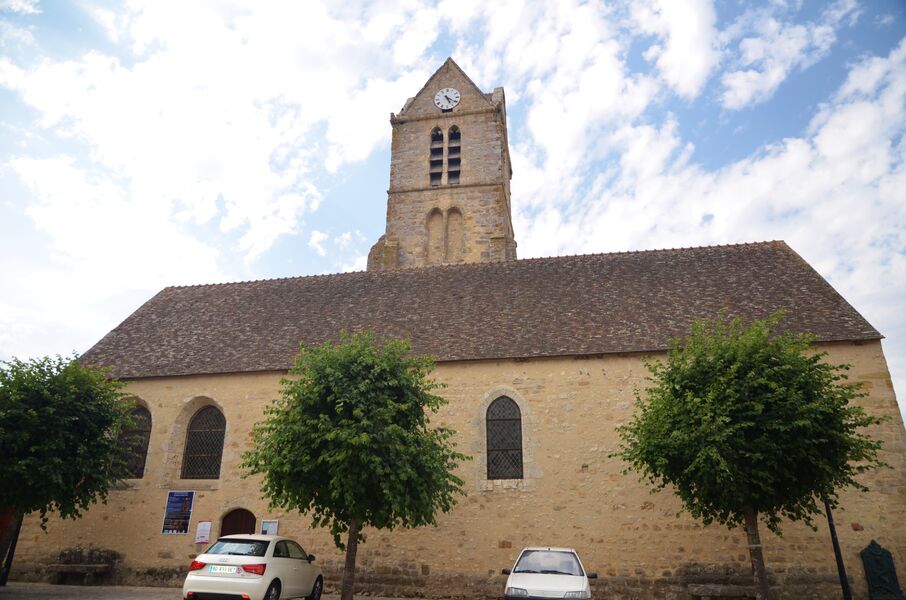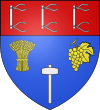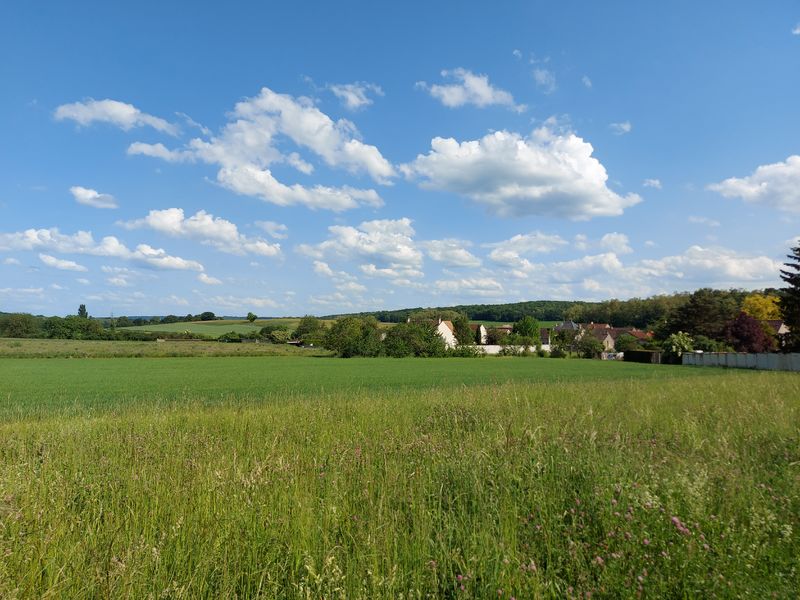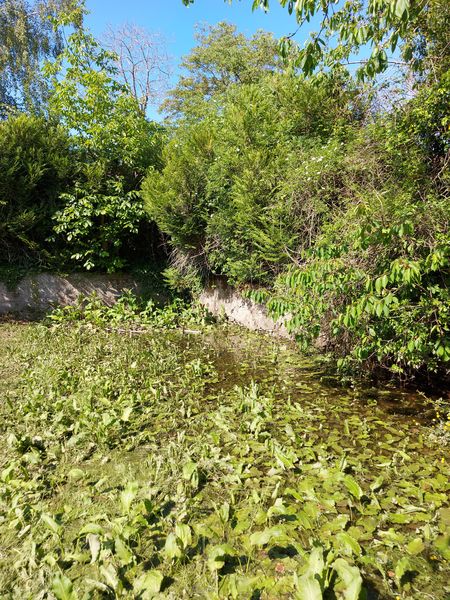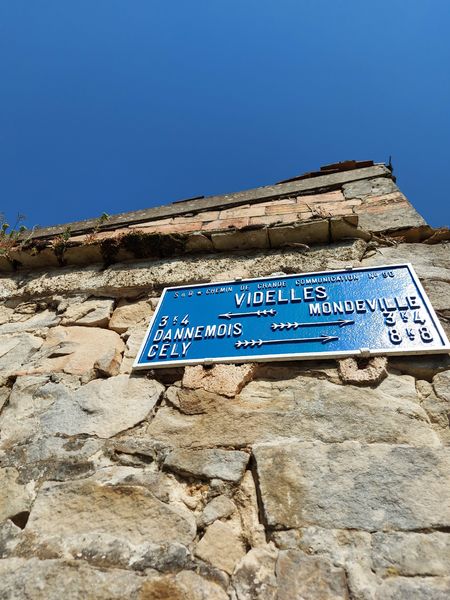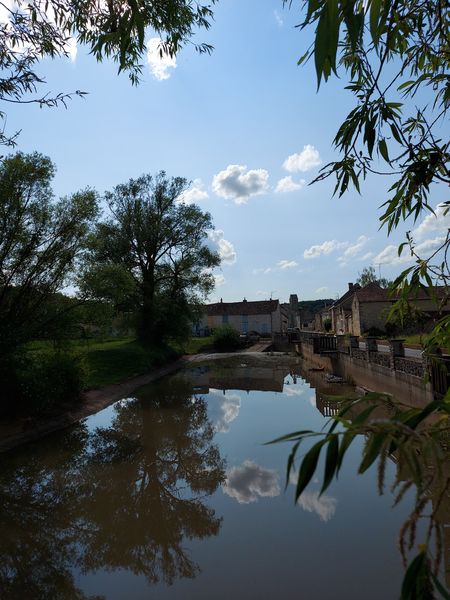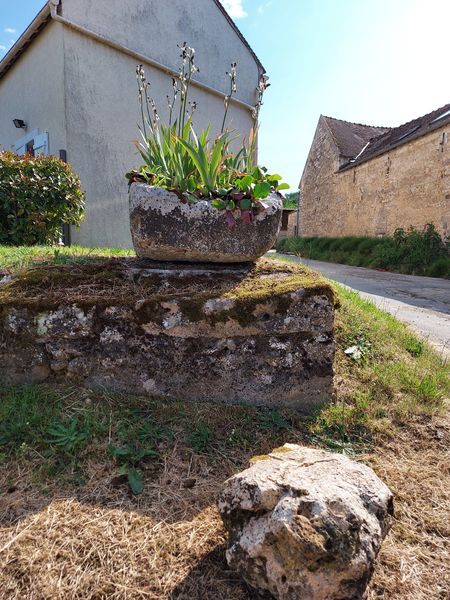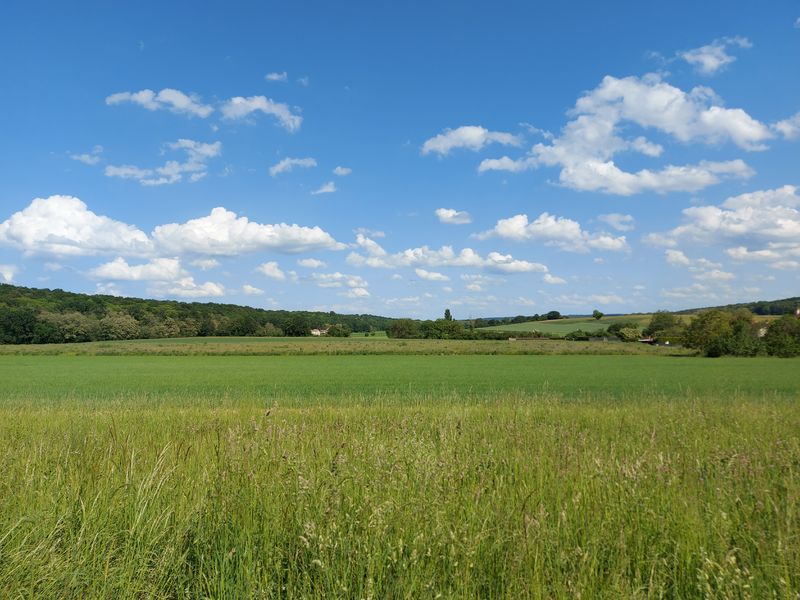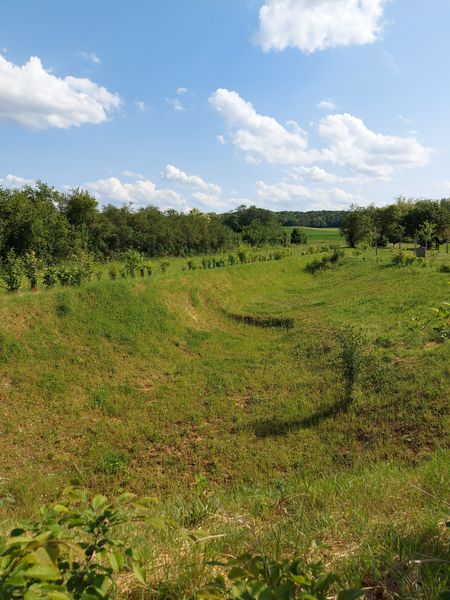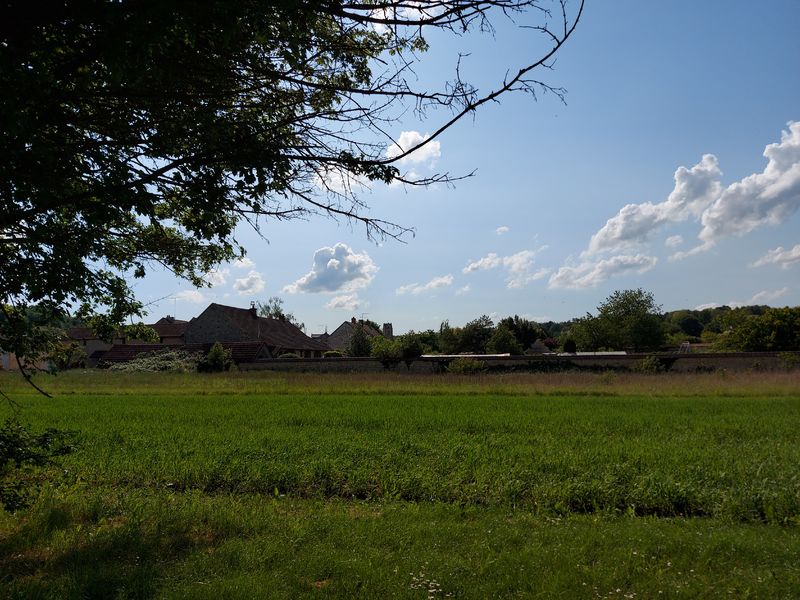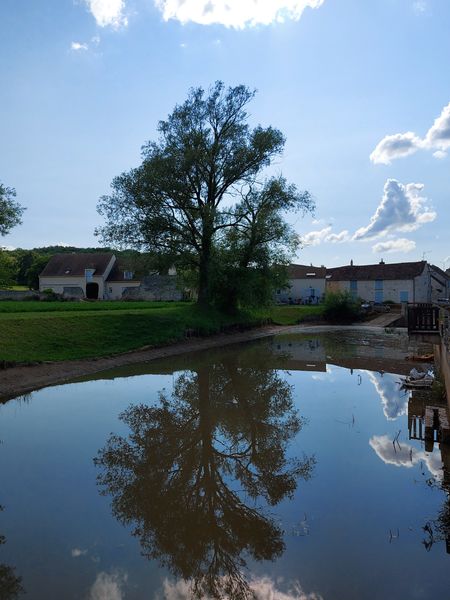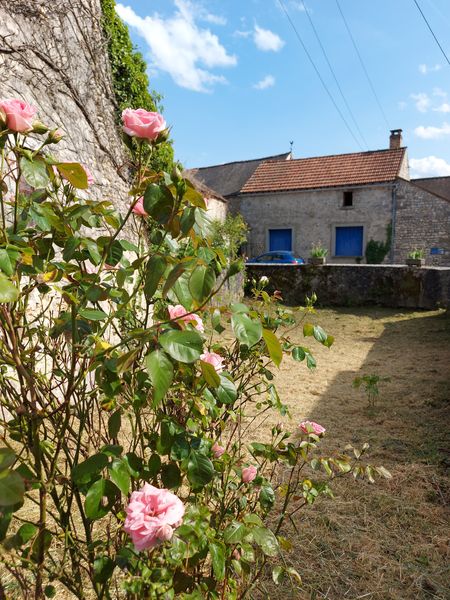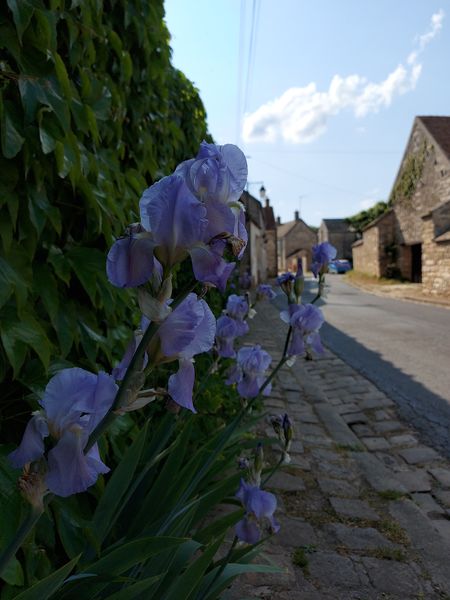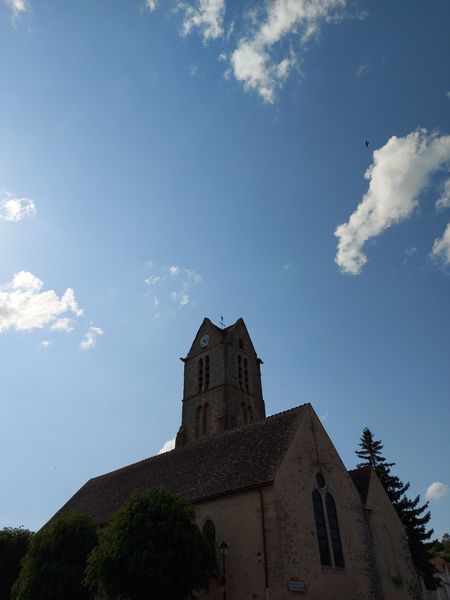Videlles
Videlles
Patrimoine culturel
Videlles was a village located in the North of the Communauté de Communes des 2 Vallées and has been occupied by humans since the Neolithic era. Its history is captivating and a lot of vestiges were found.
-------------
HISTORY
Human presence in Videlles has been attested for 4 800 years now and the inhabitants are part of the group called “Cerny-Videlles culture”. This old group from the Neolithic era was installed in a certain number of villages of the Parisian Bassin and Videlles was part of it. Some archeological digs confirmed this in the “Le Site des Roches”. It is not astonishing as the territory was very favourable for humans during Prehistory : numerous sandstone rocks, caves, forests, small games, plants and water.
Numerous caves were found around the village and several items were inside of them such as pottery and tools dating back from the Cerny-Videlles culture. The tools were particularly greatly decorated for the time. Then, those caves were used during the Bronze Age and Gallo-Roman era as many objects during those ages were found too. Several Gallo-Roman villas were supposed to stand in the surrounding plateaus. The name of the village could come from this same period (several localities of Videlles had a latin name first that evolved in French throughout time), however no serious toponymy has been found yet.
During the 12th century, Videlles was part of the archbishopric of Sens, the oldest in France. A lot of villages of the area were part of this same archbishopric. In 1134, King Louis VI gave to the nuns of Yerres-en-Brie the locality of Marbois (formerly Amerbois and Amoro-bosco) and then, in 1170, they received the locality of d’Artolu (formerly Retolu).
In 1220, Simon de Montfort, lord of Montfort-l’Amaury, gave a barn located in Marbois to the nuns of Port-Royal, who also owned a farm in Mondeville, a village juste next to Videlles.
After the Hundred Years War, during the 15th century, the village extended its church and enhanced the bell tower.
The church was sadly looted and burnt during the 17th century throughout the French civil war called la Fronde. Indeed, numerous battles happened around here and even small villages were impacted.
For several years, it was certified that between 300 and 400 persons from Videlles and villages all around were attacked and killed by wolves. The parish priest Heynaud kept a parish register in Videlles where he wrote a lot about those violent killings. Indeed, he explained that during the siege of Etampes in 1652, a lot of inhabitants of the city died and their corpses stayed in the streets. The smell of death and blood attracted wolves and they acquired a taste for human flesh, so that they started attacking people.
During the 17th century, the official painter of the royal court, Philippe de Champaigne, bought a house in Videlles. This famous painter was well-known as he was the only one allowed to paint Richelieu wearing his cardinal’s clothes. He was also very close to the nuns of Port-Royal as they were supposed to miraculously healed his paralysed daughter. Then, she became a nun inthe Port-Royal,s convent in Mondeville.
On the 6th of April 1814, some battles took place in the locality of Les Cinquantes in Videlles. Napoléon and most of his soldiers retired near Fontainebleau, where he abdicated a few hours later, and was observing the battle from Mondeville.
During the 19th and 20th centuries, the village was mostly made of its farming, vineyards, cereals and vegetables productions. A high number of inhabitants were also working in the sandstone’s quarries until the 50s. Actually, sandstone was exploited a lot in the area to pave Paris’ streets.
The village was mostly spared during the wars, especially during World War II. The soldiers of General Patton freed Videlles on the 22nd of August 1944. Exchanges of fire did not last long but one person died. German soldiers were captured by Americans.
-------------
HERITAGE
The Church of Saint-Léonard
The church is located in the village center of Videlles. It was built at the end of the 12th century. Its bell tower was made of sandstone and was particularly outstanding for the Middle Age. Its top was enhanced during the 15th century with a gabled roof and gargoyles.
During the siege of Etampes in 1652, the church was sadly looted, as were numerous churches in the area. The church may have been seriously damaged during different wars because most of it was rebuilt during the 18th century.
The old bell tower was classified as part of the Monuments Historiques in 1926. Its bell from 1646 is also classified and can now be seen in the nave.
++++
The Cross de Marbois
The Cross de Marbois is a wayside cross located in the locality of Marbois in Videlles. Those crosses were used to guide people and protect a place. This one is made of a cut stone pedestal where stands a cast iron cross. It is mostly hidden in the vegetation and was placed here in 1784.
++++
The Pond du Hameau de Chêne Bécart
This small pond has a major ecological interest as it possesses a very rich ecosystem maintaining biodiversity. This pond was very important in the past for people to locate themselves in the village.
++++
La Grande Mare (a pond)
This pond was used to be called “La Mare aux Canards” (the duck’s pond) or “La Mare du Gazon” (the lawn’s pond) and is one of the oldest ponds of the village as it was written on stewardship plans from the 18th century. Also, it can be seen on old postcards that the pond was once used as a wash-house. The pond’s surroundings were rebuilt in 1994.
++++
The Pond de l’Impasse des Rosiers
It is an old pond that is not used anymore, empty of water and covered in vegetation. Its walls made of sandstone and concrete and also the cut stone stair are still in good shape and can still be seen.
++++
The Pond de la Rue de la Croix Boissée
This pond is located near the Sentier des Bois, not far from the war memorial of Videlles. It is circled by walls. The pond is dried up and is nowadays only used as a water weir and is only full when it is raining a lot.
++++
The Pond des Lavandières
This small pond is situated Chemin des Lavandières. It is circled by a wall and an iron fence. There is a lot of vegetation around and possesses a very interesting biodiversity.
++++
The Ponds des Roches
The first pond is just at the entry of the forest called la Forêt au Bout du Chemin de la Messe. It is protected by walls.
The second pond is situated at the end of the road called Chemin du Puits. Following the seasons, the vegetation can hide the pond from curious eyes.
++++
The Wells
The Well du Retolu is covered with a roof made of flat tiles. A big wheel is tied to the well. The mechanism is made of wood gears and still can be used nowadays.
L’Ancien Puits (the old well) is located Rue d’en Bas, not far from the Grande Mare. From this old well, only the lower part made of sandstone is still standing nowadays. In the past, it was nearly 30 meters deep. A flower box was carved in a sandstone rock.
++++
SOURCE: Mairie de Videlles, Musée de Préhistoire d’Ile-de-France, Videlles Passé Présent, Les Amis de Milly-en-Gâtinais et Environs, Parc Naturel Régional du Gâtinais Français
HISTORY
Human presence in Videlles has been attested for 4 800 years now and the inhabitants are part of the group called “Cerny-Videlles culture”. This old group from the Neolithic era was installed in a certain number of villages of the Parisian Bassin and Videlles was part of it. Some archeological digs confirmed this in the “Le Site des Roches”. It is not astonishing as the territory was very favourable for humans during Prehistory : numerous sandstone rocks, caves, forests, small games, plants and water.
Numerous caves were found around the village and several items were inside of them such as pottery and tools dating back from the Cerny-Videlles culture. The tools were particularly greatly decorated for the time. Then, those caves were used during the Bronze Age and Gallo-Roman era as many objects during those ages were found too. Several Gallo-Roman villas were supposed to stand in the surrounding plateaus. The name of the village could come from this same period (several localities of Videlles had a latin name first that evolved in French throughout time), however no serious toponymy has been found yet.
During the 12th century, Videlles was part of the archbishopric of Sens, the oldest in France. A lot of villages of the area were part of this same archbishopric. In 1134, King Louis VI gave to the nuns of Yerres-en-Brie the locality of Marbois (formerly Amerbois and Amoro-bosco) and then, in 1170, they received the locality of d’Artolu (formerly Retolu).
In 1220, Simon de Montfort, lord of Montfort-l’Amaury, gave a barn located in Marbois to the nuns of Port-Royal, who also owned a farm in Mondeville, a village juste next to Videlles.
After the Hundred Years War, during the 15th century, the village extended its church and enhanced the bell tower.
The church was sadly looted and burnt during the 17th century throughout the French civil war called la Fronde. Indeed, numerous battles happened around here and even small villages were impacted.
For several years, it was certified that between 300 and 400 persons from Videlles and villages all around were attacked and killed by wolves. The parish priest Heynaud kept a parish register in Videlles where he wrote a lot about those violent killings. Indeed, he explained that during the siege of Etampes in 1652, a lot of inhabitants of the city died and their corpses stayed in the streets. The smell of death and blood attracted wolves and they acquired a taste for human flesh, so that they started attacking people.
During the 17th century, the official painter of the royal court, Philippe de Champaigne, bought a house in Videlles. This famous painter was well-known as he was the only one allowed to paint Richelieu wearing his cardinal’s clothes. He was also very close to the nuns of Port-Royal as they were supposed to miraculously healed his paralysed daughter. Then, she became a nun inthe Port-Royal,s convent in Mondeville.
On the 6th of April 1814, some battles took place in the locality of Les Cinquantes in Videlles. Napoléon and most of his soldiers retired near Fontainebleau, where he abdicated a few hours later, and was observing the battle from Mondeville.
During the 19th and 20th centuries, the village was mostly made of its farming, vineyards, cereals and vegetables productions. A high number of inhabitants were also working in the sandstone’s quarries until the 50s. Actually, sandstone was exploited a lot in the area to pave Paris’ streets.
The village was mostly spared during the wars, especially during World War II. The soldiers of General Patton freed Videlles on the 22nd of August 1944. Exchanges of fire did not last long but one person died. German soldiers were captured by Americans.
-------------
HERITAGE
The Church of Saint-Léonard
The church is located in the village center of Videlles. It was built at the end of the 12th century. Its bell tower was made of sandstone and was particularly outstanding for the Middle Age. Its top was enhanced during the 15th century with a gabled roof and gargoyles.
During the siege of Etampes in 1652, the church was sadly looted, as were numerous churches in the area. The church may have been seriously damaged during different wars because most of it was rebuilt during the 18th century.
The old bell tower was classified as part of the Monuments Historiques in 1926. Its bell from 1646 is also classified and can now be seen in the nave.
++++
The Cross de Marbois
The Cross de Marbois is a wayside cross located in the locality of Marbois in Videlles. Those crosses were used to guide people and protect a place. This one is made of a cut stone pedestal where stands a cast iron cross. It is mostly hidden in the vegetation and was placed here in 1784.
++++
The Pond du Hameau de Chêne Bécart
This small pond has a major ecological interest as it possesses a very rich ecosystem maintaining biodiversity. This pond was very important in the past for people to locate themselves in the village.
++++
La Grande Mare (a pond)
This pond was used to be called “La Mare aux Canards” (the duck’s pond) or “La Mare du Gazon” (the lawn’s pond) and is one of the oldest ponds of the village as it was written on stewardship plans from the 18th century. Also, it can be seen on old postcards that the pond was once used as a wash-house. The pond’s surroundings were rebuilt in 1994.
++++
The Pond de l’Impasse des Rosiers
It is an old pond that is not used anymore, empty of water and covered in vegetation. Its walls made of sandstone and concrete and also the cut stone stair are still in good shape and can still be seen.
++++
The Pond de la Rue de la Croix Boissée
This pond is located near the Sentier des Bois, not far from the war memorial of Videlles. It is circled by walls. The pond is dried up and is nowadays only used as a water weir and is only full when it is raining a lot.
++++
The Pond des Lavandières
This small pond is situated Chemin des Lavandières. It is circled by a wall and an iron fence. There is a lot of vegetation around and possesses a very interesting biodiversity.
++++
The Ponds des Roches
The first pond is just at the entry of the forest called la Forêt au Bout du Chemin de la Messe. It is protected by walls.
The second pond is situated at the end of the road called Chemin du Puits. Following the seasons, the vegetation can hide the pond from curious eyes.
++++
The Wells
The Well du Retolu is covered with a roof made of flat tiles. A big wheel is tied to the well. The mechanism is made of wood gears and still can be used nowadays.
L’Ancien Puits (the old well) is located Rue d’en Bas, not far from the Grande Mare. From this old well, only the lower part made of sandstone is still standing nowadays. In the past, it was nearly 30 meters deep. A flower box was carved in a sandstone rock.
++++
SOURCE: Mairie de Videlles, Musée de Préhistoire d’Ile-de-France, Videlles Passé Présent, Les Amis de Milly-en-Gâtinais et Environs, Parc Naturel Régional du Gâtinais Français
Prestations, conforts et services
- French


